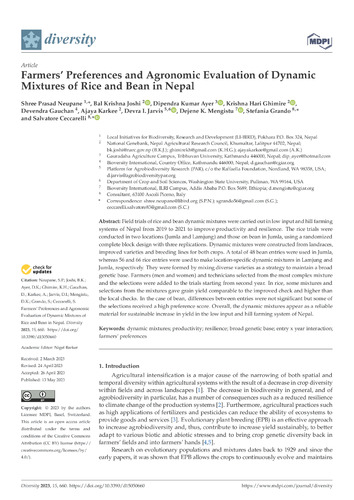Farmers’ preferences and agronomic evaluation of dynamic mixtures of rice and bean in Nepal
Field trials of rice and bean dynamic mixtures were carried out in low input and hill farming systems of Nepal from 2019 to 2021 to improve productivity and resilience. The rice trials were conducted in two locations (Jumla and Lamjung) and those on bean in Jumla, using a randomized complete block design with three replications. Dynamic mixtures were constructed from landraces, improved varieties and breeding lines for both crops. A total of 48 bean entries were used in Jumla, whereas 56 and 66 rice entries were used to make location-specific dynamic mixtures in Lamjung and Jumla, respectively. They were formed by mixing diverse varieties as a strategy to maintain a broad genetic base. Farmers (men and women) and technicians selected from the most complex mixture and the selections were added to the trials starting from second year. In rice, some mixtures and selections from the mixtures gave grain yield comparable to the improved check and higher than the local checks. In the case of bean, differences between entries were not significant but some of the selections received a high preference score. Overall, the dynamic mixtures appear as a reliable material for sustainable increase in yield in the low input and hill farming system of Nepal.

